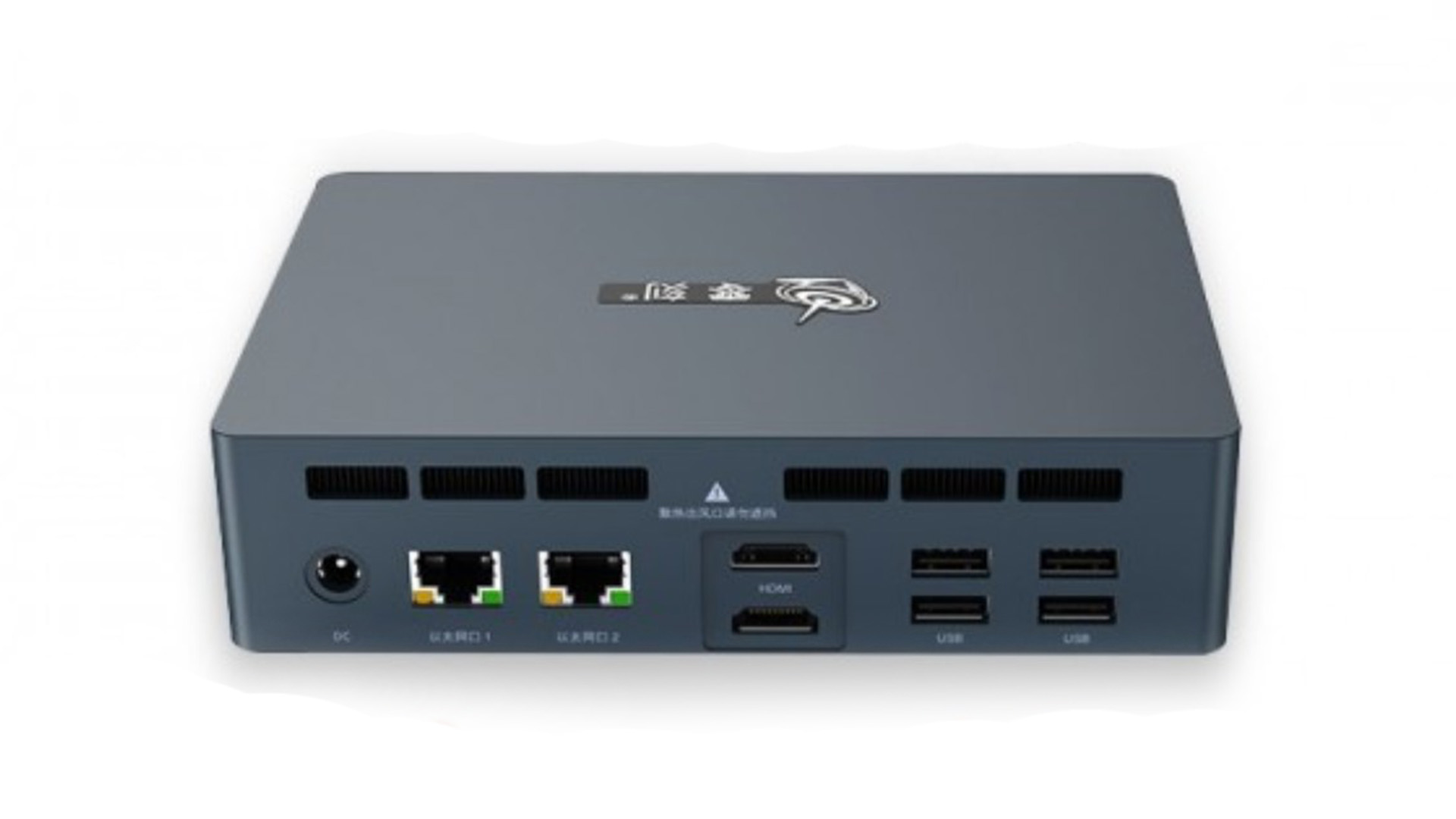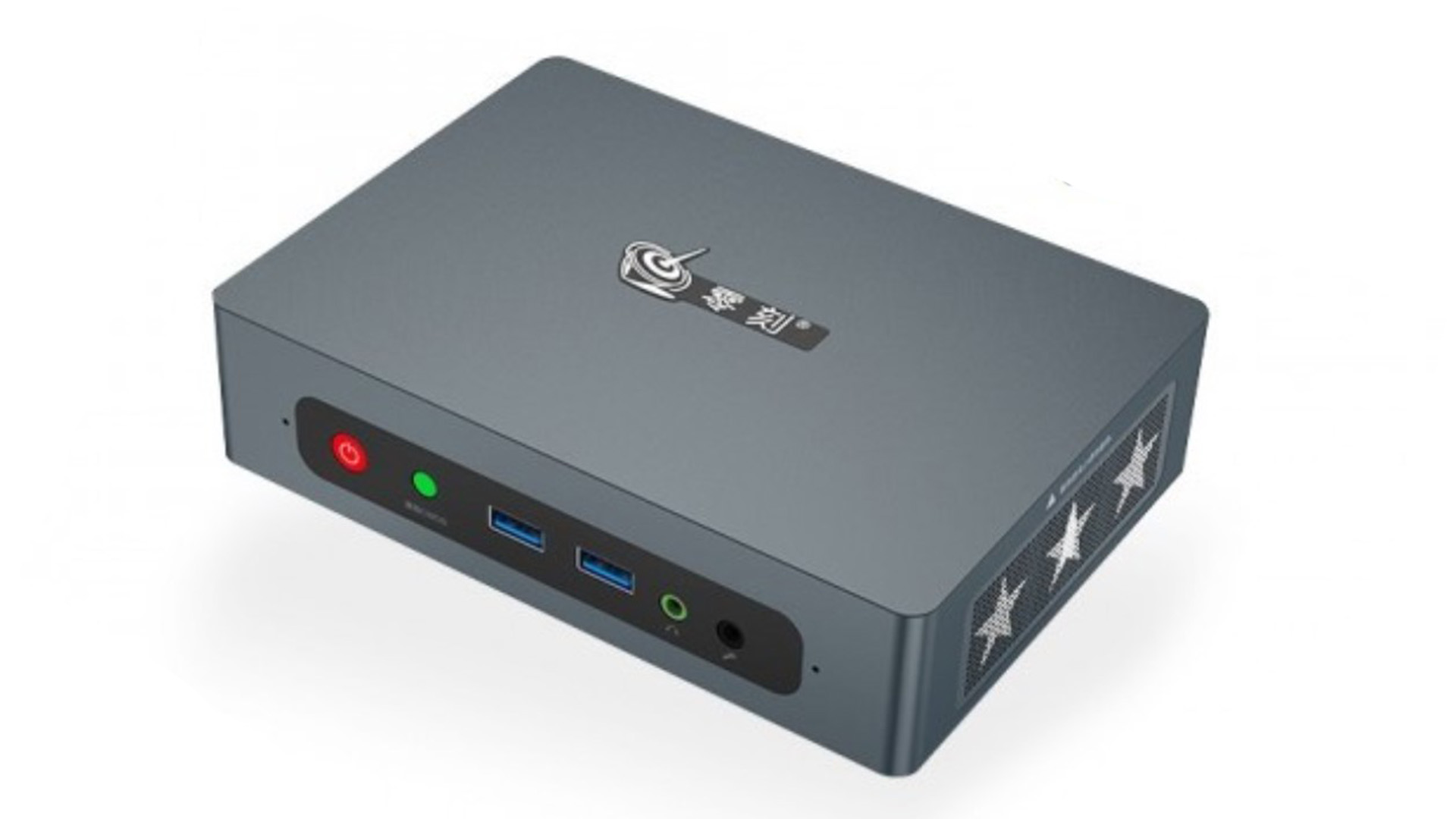New Mini PC Powered by China's Zhaoxin x86 CPU
Zhaoxin KX-6640MA in the wild
A small-form-factor PC featuring the Chinese-made Zhaoxin KX-6640MA processor, a reminder that AMD and Intel aren’t the only game in town any more, has appeared for sale (and is sold out) on Shopee Indonesia, where it was spotted by CNX Software.


The KX-6640MA is a quad-core X86 processor that runs at 2.1 GHz base clock and 2.6 GHz boost clock with a 4MB cache, a 25W TDP and C-960 integrated graphics that support 4K output. Alongside this sits 8GB of DDR4, upgradable to 64GB, a pair of NVMe M.2 slots, one with a 256GB SSD already in it, and a 1TB HDD.
Video is handled by a pair of HDMI 2.0 ports, and there are two gigabit ethernet sockets too, along with WI-Fi 5 and Bluetooth 4. There are six USB 3.0 ports, all of them type-A, plus headphones and mic ports and a power brick. Compatible operating systems aren’t discussed, but there’s something that looks a lot like Windows 10 in the shopping site's images. The price converts to around $270.
Zhaoxin processors haven't been able to compete with the best CPUs, sitting below i3s and Pentiums in our testing. This doesn’t mean it’s not good enough, if the price is right, to carve out a niche for itself. And of course, it was probably made with the home market in mind.
And while it’s interesting to see something like this for sale outside the Chinese market, if you’re thinking about ordering one when they come back into stock you might want to pause: CNX reports that requests for a review sample were rebuffed by Beelink as “they had stopped production due to a lack of supply for the CPU”. However, we found this Zhaoxin KX-6640MA-based mini PC for sale for $260, and apparently in stock, on Newegg, for anyone wanting to break out of the Intel / AMD hegemony.
Get Tom's Hardware's best news and in-depth reviews, straight to your inbox.

Ian Evenden is a UK-based news writer for Tom’s Hardware US. He’ll write about anything, but stories about Raspberry Pi and DIY robots seem to find their way to him.
-
JamesJones44 I'm a little confused to be honest, do they hold a license to the x86 ISA? Or is this just doing it without permission?Reply -
maik80 Reply
Intel has an antitrust agreement that makes it very difficult for it to sue companies for using x86JamesJones44 said:I'm a little confused to be honest, do they hold a license to the x86 ISA? Or is this just doing it without permission? -
hotaru.hino Reply
You can just grab the ISA documentation right on Intel's website and AMD's website. If it was freely (as in beer) available, I don't understand why you need a license to implement an x86 processor.JamesJones44 said:I'm a little confused to be honest, do they hold a license to the x86 ISA? Or is this just doing it without permission?
Now how it's implemented, and maybe some secret sauce hardware that's unrelated to the ISA, is what's hidden behind licenses and IP laws or whatnot.
EDIT: It appears Zhaoxin is partly owned by VIA (see https://en.wikipedia.org/wiki/Zhaoxin) -
JamesJones44 Replyhotaru.hino said:EDIT: It appears Zhaoxin is partly owned by VIA (see https://en.wikipedia.org/wiki/Zhaoxin)
That makes more sense to me now. I knew Intel was able to stop other companies from making x86 CPUs without licensing, so I wasn't sure how they were able to sell outside of China without Intel getting angry. Now that I understand they are/were part of VIA that makes more sense. -
Drazen ISA is proprietary and license must be aquired, paid. What is different between ARM and Intel is architecture. ARM sells (gives for free) it's core design (RTL) while Intel does not.Reply
AMD and VIA bought ISA and developed their own cores, like Apple did with M1. Also in past AMD created x64 ISA and Intel bought it.
Chinese have cooperation with AMD and VIA - several Chinese companies have legal x86/x64 CPUs with custom or VIA cores. Of course VIA is out for long time while AMD does not sell Zen cores. -
hotaru.hino Reply
This looks like a confusion between what the ISA is (an abstraction of a computer) and the actual realization of it (the CPU core). I would still argue the ISA, with the exception of maybe some novel things, cannot be protected behind IP laws. Otherwise:Drazen said:ISA is proprietary and license must be aquired, paid. What is different between ARM and Intel is architecture. ARM sells (gives for free) it's core design (RTL) while Intel does not.
AMD and VIA bought ISA and developed their own cores, like Apple did with M1. Also in past AMD created x64 ISA and Intel bought it.
Chinese have cooperation with AMD and VIA - several Chinese companies have legal x86/x64 CPUs with custom or VIA cores. Of course VIA is out for long time while AMD does not sell Zen cores.
Emulators would be illegal, which they definitively are not. Emulators are simply a software implementation of the ISA.
It seems silly legally speaking that you can say "hexadecimal 0x0001 is code for addition and nobody else can use that code unless they pay me"
However I do believe you can't essentially copy an ISA's opcodes and behavior and call it something else. But if you rearrange enough parts around, especially core functionality, you can get away with it. Which is how the MOS 6502 was allowed to exist.
Although Zilog's Z80 is an interesting case because it's binary compatible with Intel's 8080. The only thing Intel didn't like about it was the usage of similar assembly language mnemonics... which Zilog changed and got away with.There's nothing illegal with feeding the processor inputs and studying its outputs. And if the manufacturers are freely providing what inputs are acceptable and what the expected outputs are, that just makes clean-room reverse engineering easier.